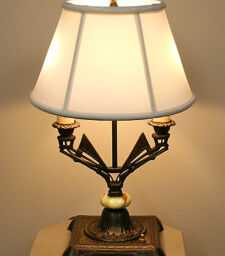Many have heard terms such as “cat’s-eye” and “color-change sapphire”, but there are many who don’t know what these terms indicate. These are names for certain types of unusual stones called phenomenal gems.
Phenomena are the gemstone equivalents of “special effects”. They signify extremely special properties in stones, and because of this, these stone command special prices! There are many kinds of phenomenal gems, and we hope this article will make these terms clear.
First of all, let us consider asterism. This phenomenon exhibits itself in certain types of corundum (sapphire and ruby), garnet, spinel, diopside, beryl, quartz, and orthoclase. It comes from the Latin word for star. When this phenomenon is present, a four-, six-, or, rarely, twelve-rayed star is displayed on the surface of the stone. This is usually caused by needle-like inclusions within the stone, which are aligned in four, six, or twelve ways, and cause the light to reflect in a star-shaped pattern. A stone especially valuable if the center of the star hovers right over the center of the stone! A stone must be a cabochon (dome-topped stone) in order to display this.
Now we come to chatoyant stones. These are better known as cat’s-eye stones. This effect is similar to asterism, except that this involves a single direction of needle-like inclusions. When the light reflects off of these, a single band of light glares out at the viewer. Usually, these stones must be cut as cabochons. The exception to this rule is tiger’s-eye, where the needles wave through the stone, and therefore produce a cat’s-eye in a flat stone.
One of the more astonishing phenomena is color-change. This is where a stone is a completely different color depending on which light it is viewed under. The most famous of these gems is alexandrite, but garnet, cubic zirconia, spinel, sapphire, and glass may all display color-change. This provides a jewelry piece with an added dimension of excitement. In the most valuable color change stones, both colors are strong and attractive.
Play of color is one of my personal favorites. This is the effect produced by precious opal, where an otherwise unremarkable stone shoots flashes of different color out of its depths. This is caused by the opal’s unique structure. Whereas “common” opal (potch) is made up of microscopic silica spheres all jumbled together, precious opal is colorful because these sphere are arranged in a checkerboard pattern. These split the light into its spectral colors.
Iridescence, orient, and labradorite work in a similar way. Iridescence can be a characteristic of mother-of-pearl, agate, and andradite garnet. It is the same effect as is produced by oil in a puddle, where the light is split as it is reflected by successive layers of oil and water. Different layers of minerals can produce this same effect in gemstones. Orient and labradorescence are basically the same, but look different because orient occurs in pearls, and labradorescence occurs in labradorite.
Adularescence is exhibited by moonstone. This works by layers as well, except that instead of the light being split, it is scattered, producing a white, or ideally, blue billowy shimmering across the stone.
Aventurescence is the last phenomenon we will cover. This produces sparkly stones, caused by light reflecting from metallic flakes, usually made of hematite or copper. Sometimes, however, as in the case of quartzite, this is caused by light reflecting from the faces of crystals within the stone.
Phenomena can elevate simple gems into the realm of magic. Like great art, a person never needs to be especially educated or discerning in order to appreciate the simple majesty of one of these stones. We hope you continue to enjoy the ever-changing world of rocks and gems!
Happy Trails!
AUTOPOST by BEDEWY VISIT GAHZLY



